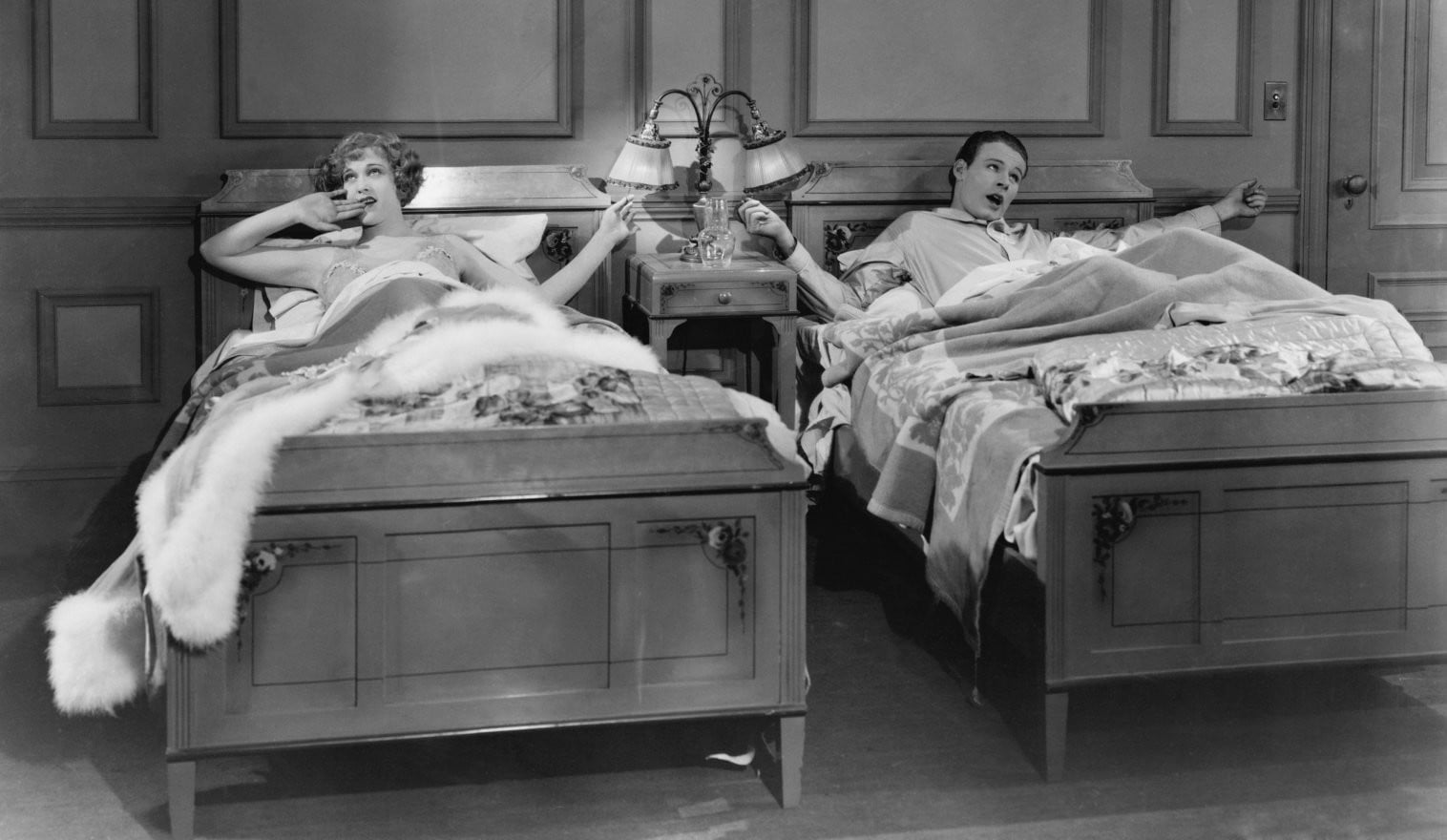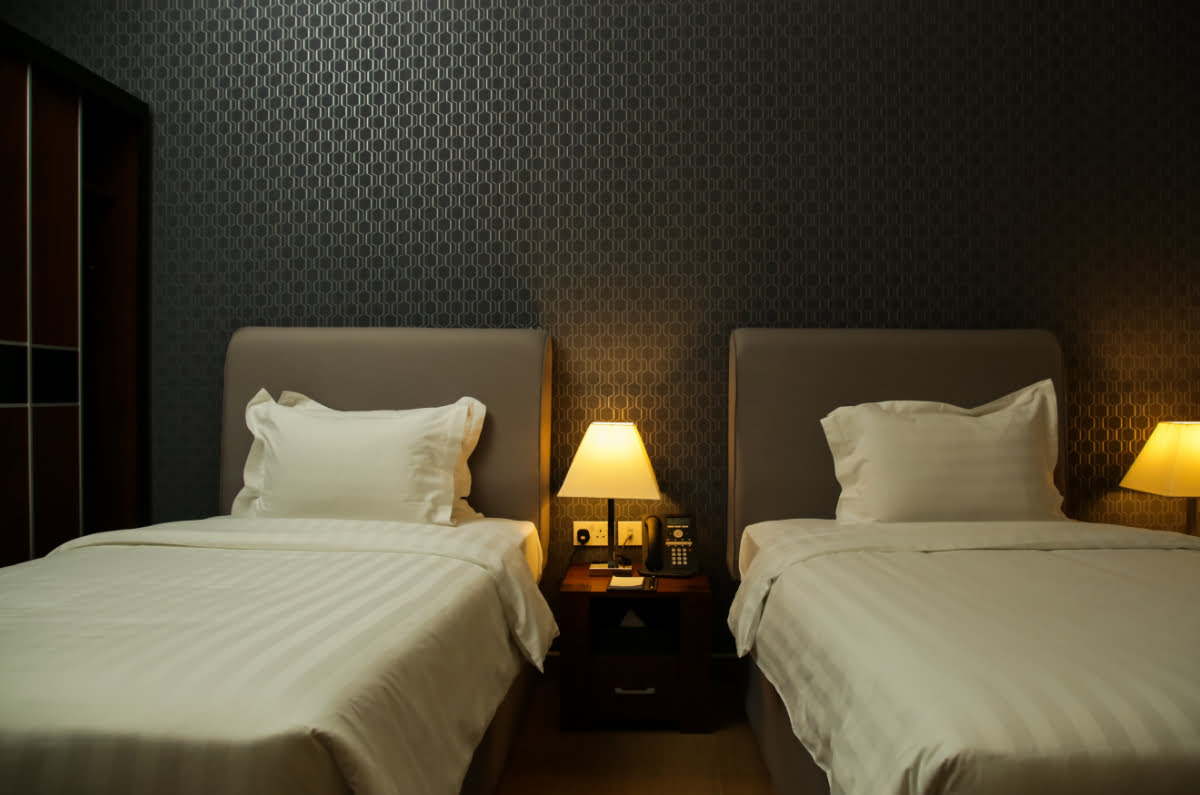A new book shows that, for the best part of a century, twin beds were seen as hygienic, modern and something to aspire to.
In A Cultural History of Twin Beds, Lancaster University professor Hilary Hinds details how doctors warned of the consequences of bed-sharing. In 1861, Dr William Whitty Hall advised that each sleeper “should have a single bed in a large, clean, light room, so as to pass all the hours of sleep in a pure fresh air, and that those who fail in this, will in the end fail in health and strength of limb and brain, and will die while yet their days are not all told”.
Four-poster beds with hangings, despite previous popularity, were now seen as something that held in all kinds of bad things in the air:
“And in the houses of the working classes, and sometimes of their betters, there is one especial abomination that ought to be got quit of. I refer to bed curtains and hangings. The set-in beds which prevail in Scotch houses are themselves very objectionable. They prevent a free circulation of air around the patient, and the atmosphere which he breathes soon gets vitiated by poisonous exhalations from the lungs and skin, and becomes a source of danger both to himself and to others. … All such arrangements still further contract the small outlet for bad air and inlet for fresh air. And not only that, they also catch and collect matter from the patient’s skin, especially in fevers, during what is called the period of desquamation, when the outer cuticle is coming off in minute shreds, easily conveyed by a whiff of air to any near object. And so the curtains become most dangerous factors in the spread of disease.”
(From “Health and Disease in Kilmarnock”, by Dr. John C. M’Vail in The Sanitary Journal, April 2, 1883)
Some doctors even believed that sharing a bed would rob the vitality of the weaker sleeper.

As ever, the trend for sleeping separately was first predominant within the upper classes, but by the 1920’s twin beds were seen as a fashionable and modern choice for middle class families that could afford the space. But by the 1940s, “they can occasion an unmistakable curl of the lip” and are “no longer the preserve of the health-conscious forward-thinking middle classes” says Hinds.
Separate beds began to be seen as an indicator of an unhappy, unhealthy marriage is the 1950s.. and by the 1960s, were seen as belonging to a bygone era.

Transatlantic confusion – what is a twin bed?
A twin bed is exactly the same dimensions as a single bed – although, of course, they are intended to be one of a pair of single beds.
However, in America, a single bed is called a ‘twin’ – in the UK it’s just called a ‘single’.






0 Comments